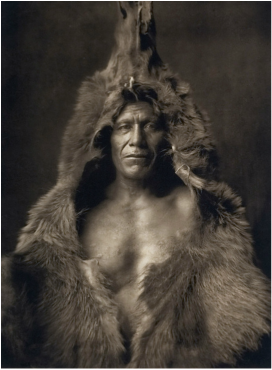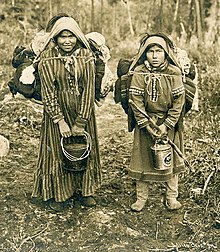
A palmetto house photographed circa 1896, typical of Atakapa and Gulf Coast Native Americans.
The Atakapa /əˈtɑːkəpə/ are an indigenous people of the Southeastern Woodlands, who spoke the Atakapa language and historically lived along the Gulf of Mexico. Europeans adopted this name from the competing Choctaw people, whom they first encountered. The Atakapan people, made up of several bands, called themselves the Ishak, pronounced "ee-SHAK", which translates as "The People." Within the tribe the Ishak identified as "The Sunrise People" and "The Sunset People". Although the people were decimated by infectious disease after European contact and declined as a tribe, survivors joined other tribes and their descendants still live in Louisiana and Texas. People identifying as Atakapa-Ishak had a gathering in 2006.
Their name was also spelled Attakapa, Attakapas, or Attacapa. It was the name by which the Choctaw people referred to them, meaning "man eater", for their practice of ritual cannibalism. Europeans encountered the Choctaw first during their exploration, and adopted their name for this people to the west. The peoples lived in river valleys, along lake shores, and coasts from Galveston Bay, Texas to Vermilion Bay, Louisiana.
Atakapa oral history says that they originated from the sea. An ancestral prophet laid out the rules of conduct. The Atapakan ate shellfish and fish. The women gathered bird eggs, the American lotus (Nelumbo lutea) for its roots and seeds, as well as other wild plants. The men hunted deer, bear, and bison, which provided meat, fat, and hides. The women cultivated varieties of maize. They processed the meats, bones and skins to prepare food for storage, as well as to make clothing, tent covers, tools, sewing materials, arrow cases, bridles and rigging for horses, and other necessary items for their survival. www.wikipedia.com
AKBAL
Kin 43: Blue Self-Existing Night
I define in order to dream
Measuring intuition
I seal the input of abundance
With the self-existing tone of form
I am guided by the power of self-generation
I am a galactic activation portal
Enter me.
The most simple and elegant means will always be true; it will therefore be aesthetic and moral.*
*Star Traveler's 13 Moon Almanac of Synchronicity, Galactic Research Institute, Law of Time Press, Ashland, Oregon,
2015 - 2016.
The Sacred Tzolk'in
Sahasrara Chakra (Dali Plasma)







































